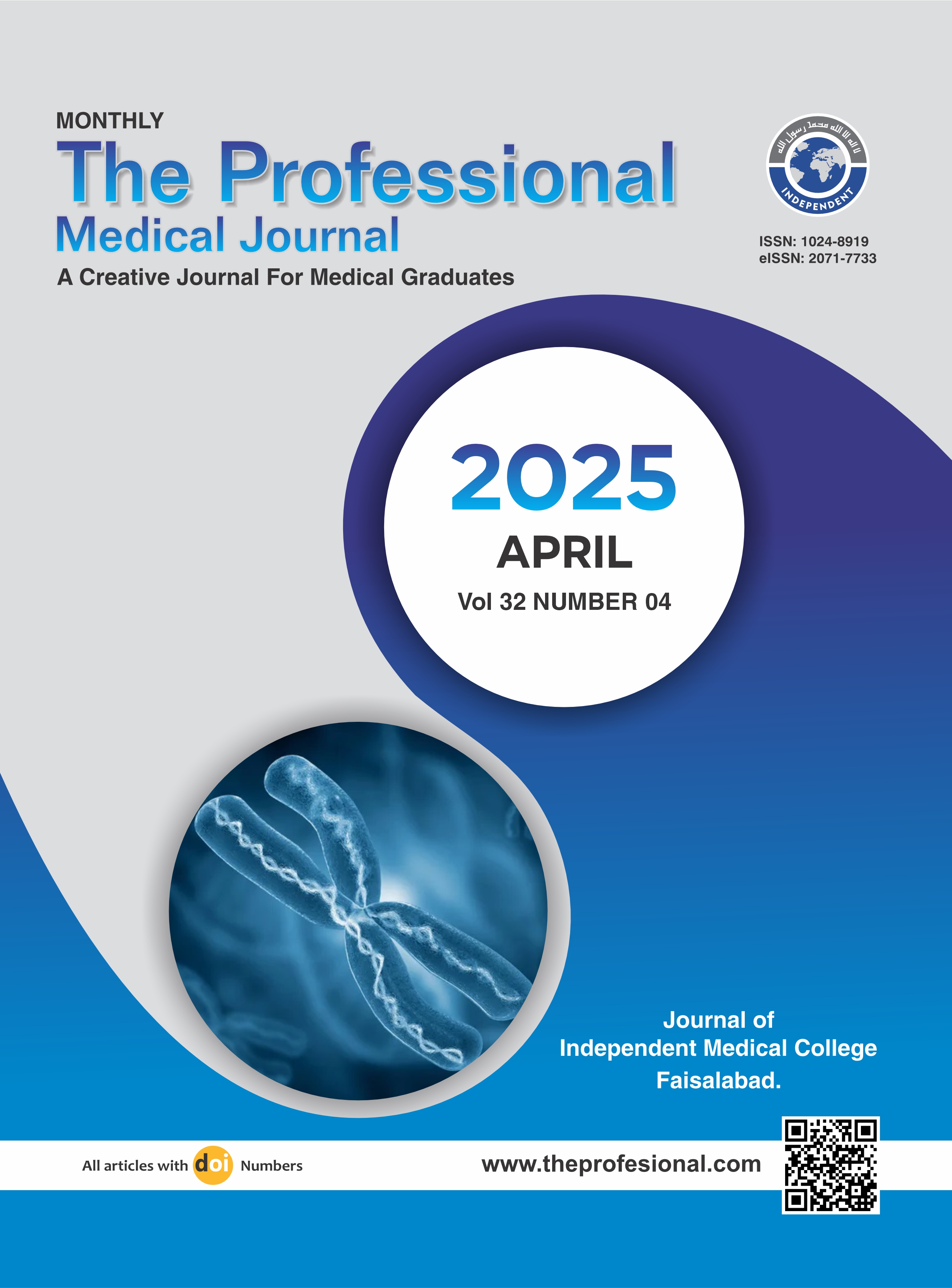Usefulness of albumin bilirubin platelet score as a predictor tool for risk esophageal varices in patients with compensated cirrhosis presenting in a Tertiary Care Hospital.
DOI:
https://doi.org/10.29309/TPMJ/2025.32.04.8856Keywords:
Accuracy, Albumin, Bilirubin, Cirrhosis, Esophageal Varices, PlateletAbstract
Objective: To determine the accuracy of albumin bilirubin platelet (ALBI-PLT) score to predict risk esophageal varices in patients presented with compensated cirrhosis in tertiary care hospital. Study Design: Cross-sectional study. Setting: Department of Gastroenterology, Liaquat National Hospital, Karachi, Pakistan. Period: February 2024 to August, 2024. Methods: Total 165 Patients of both genders were included. The albumin-bilirubin (ALBI) grade and platelet count were added to determine the ALBI-PLT score. The esophageal varices were expected as “present”, when ALBL-PLT score >3. Data were compiled and analyzed using IBM-SPSS Statistics, version 26.0. Receiver operating characteristic (ROC) curve analysis of ALBI score grades and ALBI-PLT score grades was used for detection of the cutoff value. Sensitivity, specificity, and predictive values were calculated for the cut off. Results: In a total 165 patient, 149 (90.3%) had esophageal varices. Among these 165 patients, 57 (38.3%) had amall esogphageal varices. Mean ALBI, and ALBl-PLT were 0.017±0.300, and 4.28±0.75 respectively. ALBl-PLT was found to have excellent ability to diagnose patients with and without esophageal varices based on the ROC (AUC=0.916). The sensitivity, and specificity for ALBl-PLT ≥2.0, ALT-PLT≥3.50, and ALBl-PLT≥4.50 were 100% and 0%, 89.3% and 87.5%, and 51.7% and 100%, respectively. Conclusion: This study demonstrates that ALBl-PLT score was found to have excellent ability to diagnose patients with and without esophageal varices.
Downloads
Published
Issue
Section
License
Copyright (c) 2025 The Professional Medical Journal

This work is licensed under a Creative Commons Attribution-NonCommercial 4.0 International License.


